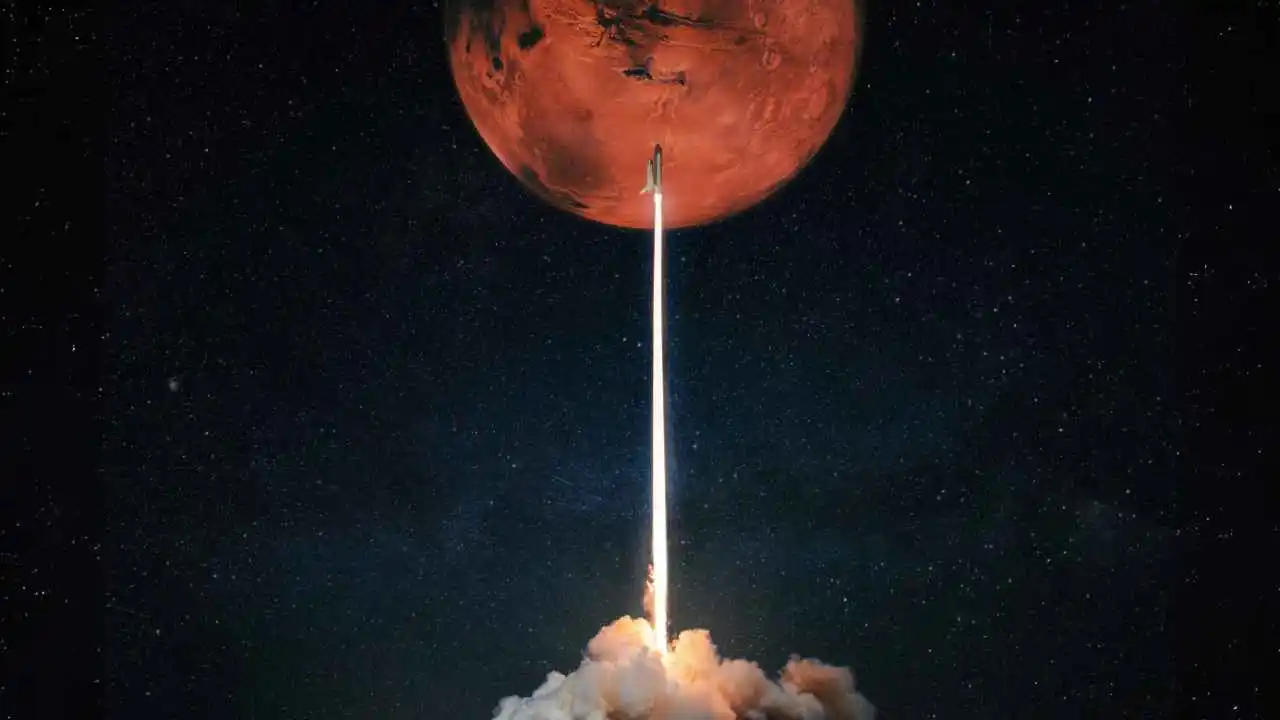Welcome to the next frontier – Mars. In recent years, NASA has been spearheading an ambitious journey towards the Red Planet, igniting imaginations and propelling humanity into a new era of space exploration.
Join me as we delve into NASA’s groundbreaking plans, the challenges they face, and the thrilling possibilities awaiting us on Mars.

Setting the Stage
The dream of reaching Mars has captivated minds for centuries, but it’s only in recent decades that it’s become a tangible goal.
NASA’s mission to Mars represents the culmination of years of scientific advancement and technological innovation. With each passing day, we edge closer to turning this dream into reality.
Mars Exploration Rovers: Pioneering Discoveries
One of NASA’s key milestones in Mars exploration was the deployment of rovers like Spirit, Opportunity, and Curiosity.
These robotic marvels have traversed the Martian landscape, uncovering secrets of its geology, climate, and potential habitability. Through their lenses, we’ve glimpsed a world ripe for exploration.
The Mars Sample Return Mission: Unraveling Mysteries
In the quest to understand Mars, NASA is preparing for its most ambitious endeavor yet: the Mars Sample Return mission.
This groundbreaking mission aims to collect samples of Martian soil and rocks, bringing them back to Earth for in-depth analysis.
By studying these samples, scientists hope to unlock the planet’s geological history and search for signs of past life.
Perseverance Rover: Hunting for Signs of Life
At the forefront of NASA’s Mars exploration efforts is the Perseverance rover.
Equipped with state-of-the-art instruments and technology, Perseverance is on a mission to search for signs of ancient microbial life and pave the way for future human exploration.
Its landing in the Jezero Crater marks a significant step forward in our understanding of Mars’ potential habitability.
Challenges of Interplanetary Travel
While the allure of Mars is undeniable, the journey poses immense challenges. Interplanetary travel is fraught with dangers, from cosmic radiation to long-duration spaceflight.
NASA’s engineers and scientists are tasked with overcoming these obstacles to ensure the safety and success of missions to Mars.

The Importance of International Collaboration
NASA’s quest to reach Mars is not a solo endeavor. International collaboration plays a crucial role in advancing our understanding of the Red Planet.
Partnerships with agencies like ESA (European Space Agency) and Roscosmos (Russian Space Agency) enable shared resources, expertise, and funding, propelling us closer to our common goal.
Mars Colonization: A Vision for the Future
Beyond exploration, NASA envisions a future where humans establish a permanent presence on Mars. Colonizing the Red Planet represents a bold step forward in our journey as a spacefaring civilization.
With the right technology and resources, Mars could become a second home for humanity, ensuring our survival and expanding the horizons of human civilization.
Sustainable Living on Mars
Surviving on Mars requires more than just technological prowess; it demands innovative solutions for sustainable living.
NASA is exploring concepts like Martian agriculture, 3D printing of habitats, and resource utilization to create self-sustaining colonies on the Red Planet.
By harnessing local resources and ingenuity, we can thrive in the harsh Martian environment.
The Role of Artificial Intelligence
Artificial intelligence (AI) is revolutionizing space exploration, aiding in everything from spacecraft navigation to data analysis.
NASA’s use of AI and machine learning algorithms enhances mission efficiency and enables autonomous decision-making, paving the way for more ambitious ventures into the cosmos.
Public Engagement and Inspiration
NASA’s journey to Mars captivates not only scientists and engineers but people around the world.
Through outreach programs, educational initiatives, and captivating media coverage, NASA inspires the next generation of explorers and fosters a sense of wonder and curiosity about the universe.
Conclusion:
As we stand on the cusp of a new era of exploration, NASA’s ambitious plans for Mars propel us into uncharted territory.
With each mission and discovery, we inch closer to unlocking the mysteries of the Red Planet and expanding the boundaries of human knowledge.

FAQs:
1. Is Mars colonization feasible in the near future?
- While challenges remain, advancements in technology and ongoing research make Mars colonization a realistic goal within the next few decades.
2. How do rovers like Perseverance navigate the Martian terrain?
- Rovers like Perseverance use a combination of cameras, sensors, and autonomous navigation systems to traverse the rugged Martian landscape.
3. What are the potential benefits of colonizing Mars?
- Colonizing Mars offers opportunities for scientific discovery, resource utilization, and the eventual expansion of human civilization beyond Earth.
4. How long does it take to travel from Earth to Mars?
- The duration of a journey to Mars varies depending on the alignment of the planets but typically takes around six to nine months.
5. Will humans ever walk on the surface of Mars?
- NASA aims to send astronauts to Mars in the coming decades as part of its long-term exploration plans, but specific timelines depend on various factors, including funding and technological development.
